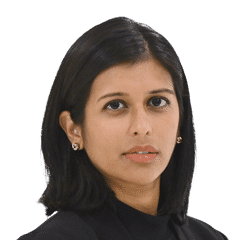New funeral services and columbarium complex planned in Mandai Avenue
Sign up now: Get ST's newsletters delivered to your inbox

NEA said Mandai Columbarium has filled 95 per cent of its 133,000 niches.
PHOTO: ST FILE
Follow topic:
SINGAPORE – A new funeral services and columbarium complex is likely to be built near the existing Mandai Columbarium to meet an expected increase in demand for after-death facilities.
The National Environment Agency (NEA) on Dec 18 said it has identified a site at the junction of Mandai Avenue and Sembawang Road to develop the new complex. It will conduct an environmental impact assessment (EIA) and feasibility study for the proposed development before finalising its plans.
NEA noted that the demand for wake spaces, columbarium niches and management of remains is expected to increase in tandem with the number of resident deaths, which is projected to rise to about 40,000 by 2040. There were 25,586 resident deaths in 2022.
“The Government is planning ahead for such essential facilities while balancing competing land use needs,” said NEA in a statement.
There are three government-operated columbariums: Choa Chu Kang Columbarium, Mandai Columbarium and Yishun Columbarium.
NEA said Mandai Columbarium – which has about 133,000 niches – is 95 per cent filled, while Yishun Columbarium – which has around 16,000 niches – is at full capacity. Choa Chu Kang Columbarium, which houses about 147,000 niches, is at 37 per cent of its capacity.
The Mandai Avenue site – located next to Nee Soon Camp and across the road from Sembawang Country Club’s golf course – was selected following consultations with agencies, NEA said.
It added that factors considered included the required site area for such a multi-use facility, development plans for the surrounding area, traffic impact and impact on surrounding developments.
The EIA and feasibility study will identify potential environmental impacts arising from the construction and post-construction stages, and involve baseline surveys to identify and document the flora and fauna at the site.
There will also be detailed monitoring of water quality, noise levels and air quality.
Thereafter, an environmental monitoring and management plan will be developed, along with measures to mitigate the impact of the project.
The total site area is about 10ha, though NEA told The Straits Times the actual size of the development will depend on the findings of the EIA and feasibility study.
Both are expected to take about 20 months to complete after an EIA consultant is appointed, said NEA in response to queries.
“Given the site context, NEA will also be exploring sensitive design of the development so that it can be integrated with the environment and minimise impact to its surroundings.” said the agency.
NEA said it engaged various nature groups in October, including the Nature Society (Singapore) (NSS), Butterfly Circle, LepakInSG and Singapore Youth Voices for Biodiversity (SYVB).
Some of the groups told ST they are concerned about the potential loss of plants that are native to Singapore’s landscape – an uncommon feature of forests here – and the movement of fauna in the area.
NSS council member Tony O’Dempsey said the site is unique as it is made up mainly of common natives such as tembusu and Elaeocarpus trees, as well as some species of conservation concern.
The NSS also has recent records of pangolins in the area, as well as records of the Malayan porcupine dating back about 10 years ago.
Mr O’Dempsey said herding fauna from the development area will be a challenge because of the adjoining busy roads. “Mammals will need to be trapped and relocated. This will be challenging logistically.”
He added that as the forest is situated on high ground and can be seen from a distance, removing it will “change the character” of this part of the Sembawang area.
Should the complex be built, “it means another patch of good forest bites the dust”, he said.
Mr Muhammad Nasry, executive director of SYVB, said even if part of the forest was saved, it would be too small to support any biodiversity due to its proximity to the built-up area of the complex.
Singapore has lost so much of its good forest habitat, he added. “If we lose too much, we approach a tipping point.”
He hopes that when work on the development starts, much of the biodiversity will be salvaged – for example by collecting seedlings of endangered species that can be replanted elsewhere, or by retaining larger trees and integrating them into the development.
“Ideally, we want to preserve as much of the existing biodiversity as possible, even if it becomes an entirely new habitat,” said Mr Nasry.

NEA noted that as a small and densely populated city state, Singapore has to support multiple, competing land use needs of current and future generations.
The agency said: “Through advance notice, careful planning, and taking necessary mitigation measures, agencies will make the best possible effort to minimise and mitigate any disamenities and potential environmental impacts arising from these developments.”


